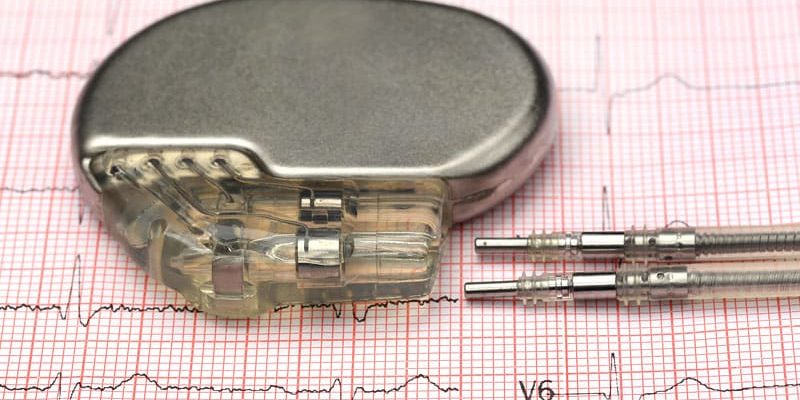A scorecard of four risk factors can help clinicians determine which patients with nonischemic cardiomyopathy would benefit from an implantable cardioverter defibrillator, researchers have found.
“The benefit of the implantable cardioverter defibrillator [ICD] for the primary prevention of sudden cardiac death has been widely established in patients with ischemic cardiomyopathy,” Ido Goldenberg, MD, a resident at the University of Rochester Medical Center, Rochester, New York, said. “In contrast, its efficacy in patients with nonischemic cardiomyopathy is more controversial.”
Goldenberg, who presented the findings at the 2023 annual Internal Medicine meeting of the American College of Physicians, cited a 2016 Danish trial that questioned the benefit of an ICD in patients with heart failure due to nonischemic cardiomyopathy. His study aimed to develop a risk stratification score that would aid in evaluating candidacy for primary prevention ICDs in patients with nonischemic cardiomyopathy.
The study included 1515 patients with nonischemic cardiomyopathy with a primary preventive indication for an ICD. The patients were pooled from two Multicenter Automatic Defibrillator Implantation Trials (MADITs) in 2009 and in 2012 that formed a basis for the current ICD guidelines. The team tested their results and performed external validation for risk scores using a contemporary cohort from the
Goldenberg and his team analyzed the data to come up with four variables to help best determine the need for an ICD in nonischemic patients:
-
Male sex
-
No cardiac resynchronization therapy
-
Black race
-
Left ventricular ejection fraction ≤ 25%
Using the variables, the researchers divided the study cohort into groups at low (n = 390), intermediate (n = 728), and high (n = 387) risk for VTA. They found the cumulative incidence of any ventricular tachycardia or ventricular fibrillation at 5 years was 42% in the high-risk group, 24% in the intermediate-risk group, and 15% in the low-risk group. The cumulative risk of fast ventricular tachycardia/ventricular fibrillation during 5 years of follow-up was 31%, 19%, and 9% in patients with high-, intermediate- and low-risk scores, respectively.
Jeffrey Goldberger, MD, chief of cardiology at the University of Miami Miller School of Medicine, Miami, Florida, said a large randomized trial is warranted to evaluate whether an ICD effectively reduces sudden cardiac death in patients without ischemia. His primary criterion now for determining whether to implant the device is if a patient’s left ejection fraction is below 35%.
While the four-factor criteria that the study investigators have proposed might prove helpful, Goldberger said, further risk stratification is necessary even in the low-risk group to “identify within that group the ones that are really low risk.”
“Even in their low-risk group, you’re talking about a 5-year risk of 10% to 15%. I’m not sure that that’s low enough to say, ‘All right, I’m not going to plant an ICD in somebody who’s got a 15% chance within the next 5 years of using it,’ ” Goldberger added. “It’s a good start, but it may still need a little bit more risk stratification within that group.”
Risks involved with implanting ICDs include infection; device malfunction requiring additional surgery; and painful, inappropriate shocks.
“Anytime you do a procedure, of course, there’s risks,” Goldberger said. “This risk–benefit ratio still has to be positive. You really want to identify people who do need it.”
Goldenberg agreed a randomized trial should explore the relationships in the context of the criteria his model has identified. But he said he hoped guidelines would influence the shared decision-making between physicians and their patients.
“This tool can be used not as an absolute yes or no decision, but it can be used to guide patient–physician care decision-making,” he said.
Goldenberg and Goldberger report no relevant financial relationships.
American College of Physicians–Internal Medicine Meeting 2023: Abstract. Presented April 28, 2023.
Robert Fulton is a journalist in Los Angeles.
For more news, follow Medscape on Facebook, Twitter, Instagram, YouTube, and LinkedIn
Source: Read Full Article
